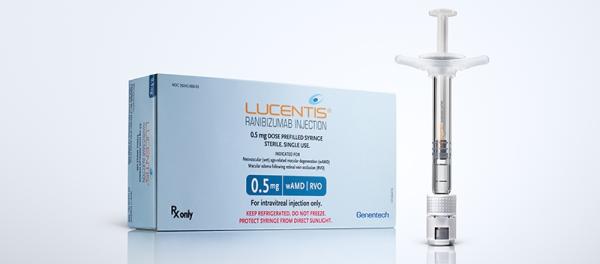Ranibizumab ophthalmic Disease Interactions
There are 2 disease interactions with ranibizumab ophthalmic.
Intravitreal injections (applies to ranibizumab ophthalmic) ocular infections
Major Potential Hazard, High plausibility. Applicable conditions: Uveitis, Orbital Infection, Infectious Endophthalmitis, Infectious Optic Neuritis
Drugs requiring intravitreal administration (including aflibercept, faricimab, pegaptanib, and ranibizumab) are contraindicated in patients with active intraocular inflammation or ocular/periocular infections; intravitreal injections have been associated with endophthalmitis. Patients should be advised to seek immediate medical attention from an ophthalmologist if the eye becomes red, photosensitive, or painful, or if a change in vision occurs in the days following drug administration.
References (4)
- (2004) "Product Information. Macugen (pegaptanib ophthalmic)." OSI Pharmaceuticals Inc
- (2006) "Product Information. Lucentis (ranibizumab ophthalmic)." Genentech
- (2011) "Product Information. Eylea (aflibercept ophthalmic)." Regeneron Pharmaceuticals Inc
- (2024) "Product Information. Vabysmo (faricimab ophthalmic)." Genentech
Ranibizumab intravitreal injection (applies to ranibizumab ophthalmic) increased intraocular pressure
Moderate Potential Hazard, Moderate plausibility. Applicable conditions: Glaucoma/Intraocular Hypertension
Increases in intraocular pressure have been reported both pre- injection and post- injection (at 60 minutes) while being treated with ranibizumab. Intraocular pressure should be monitored prior and following intravitreal injection with ranibizumab and managed appropriately.
References (1)
- (2006) "Product Information. Lucentis (ranibizumab ophthalmic)." Genentech
Switch to consumer interaction data
Ranibizumab ophthalmic drug interactions
There are 2 drug interactions with ranibizumab ophthalmic.
More about ranibizumab ophthalmic
- ranibizumab ophthalmic consumer information
- Check interactions
- Compare alternatives
- Reviews (19)
- Side effects
- Dosage information
- During pregnancy
- Drug class: anti-angiogenic ophthalmic agents
- Breastfeeding
Related treatment guides
Drug Interaction Classification
| Highly clinically significant. Avoid combinations; the risk of the interaction outweighs the benefit. | |
| Moderately clinically significant. Usually avoid combinations; use it only under special circumstances. | |
| Minimally clinically significant. Minimize risk; assess risk and consider an alternative drug, take steps to circumvent the interaction risk and/or institute a monitoring plan. | |
| No interaction information available. |
See also:
Further information
Always consult your healthcare provider to ensure the information displayed on this page applies to your personal circumstances.


